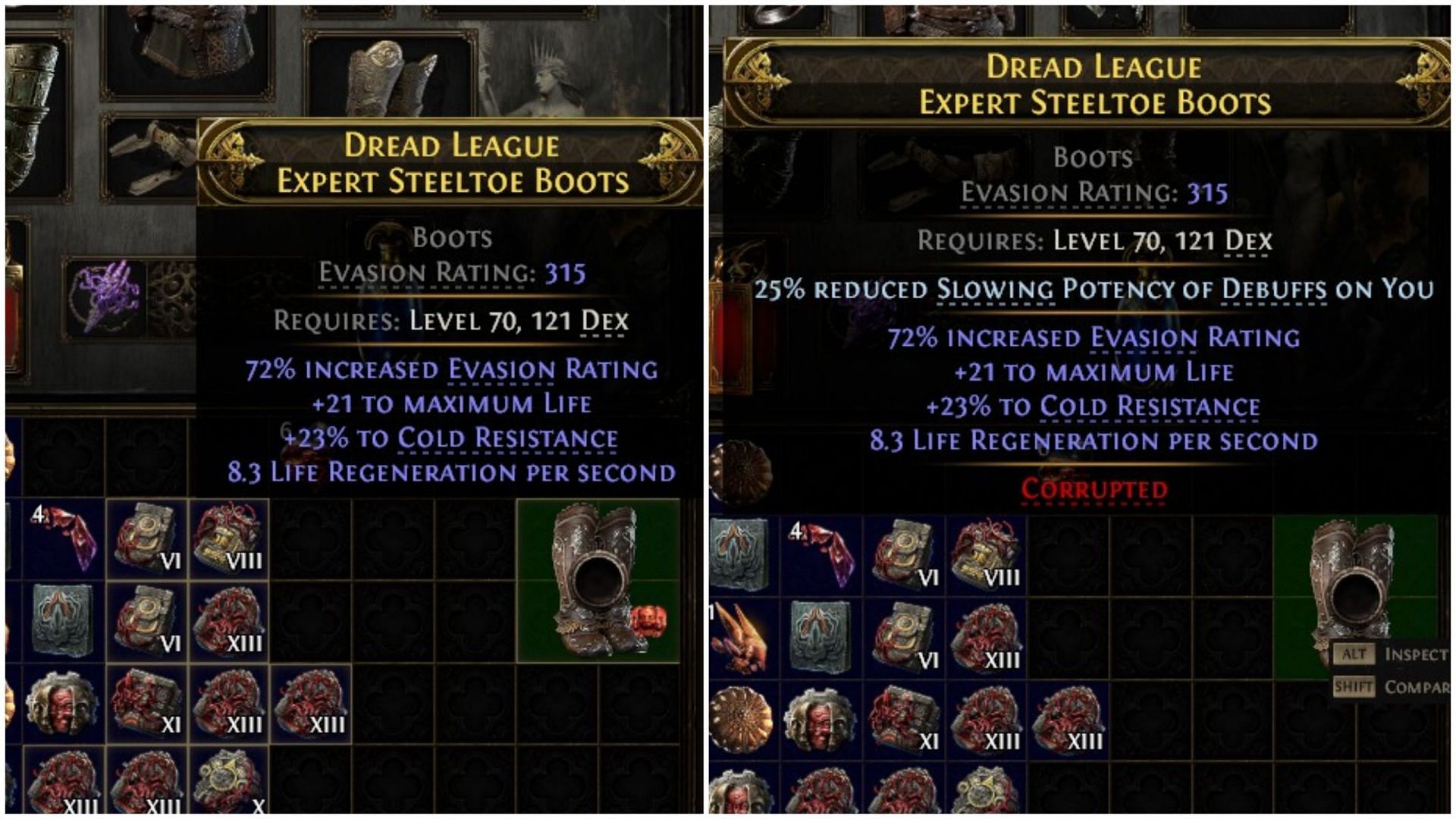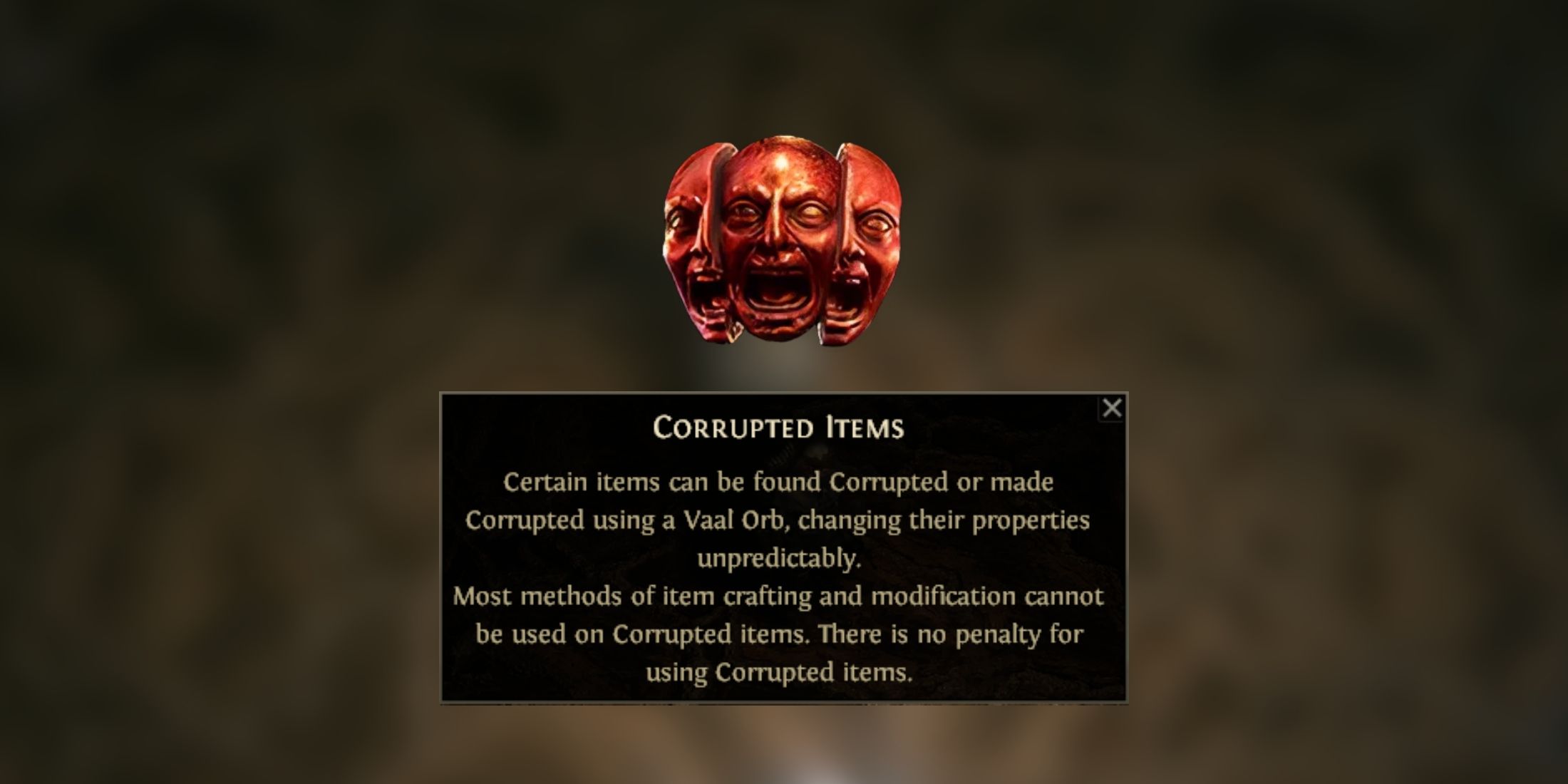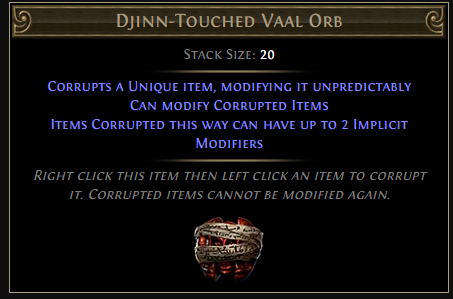In Path of Exile, dealing with corrupted items involves a unique mechanic centered around the use of Vaal Orbs. Here’s a detailed breakdown of how this works, including potential outcomes, precautions, and additional features related to item corruption.
Using Vaal Orbs to Corrupt Items
Corruption Mechanics:
– Action: When you use a Vaal Orb on an item, it corrupts the item, applying a random change to its properties. This alteration can be beneficial, detrimental, or neutral, but the key point is that it is irreversible.
– Outcome Variability: Corruption can reroll item modifiers, potentially granting more powerful stats or, conversely, stripping valuable bonuses. There is also a chance that the item’s properties could remain unchanged, aside from the addition of the “Corrupted” tag[1][5].
Considerations Before Corruption
Risk vs. Reward:
– High-Risk, High-Reward: The randomness of the effect means you must approach corruption with caution. It is best used on items where the potential for improvement outweighs the risk of degradation—generally, these are duplicates or less critical gear[1][5].
Irreversibility:
– Once an item is corrupted with a Vaal Orb, it cannot be reverted to its prior state, and most crafting options are permanently locked out. The only significant exception to this rule is the ability to modify sockets and links at the crafting bench, which requires the expending of additional Vaal Orbs[1][2].
Specific Cases
– Flasks: When you corrupt a flask, the quality will randomly vary between -10% and +10%, which illustrates how even non-armor items can be unpredictably altered through corruption[2].
– Strongboxes: Corrupted strongboxes will cause all items dropped within to be corrupted as well, adding another layer to the strategy of item management in the game[2].
Corruption in Path of Exile 2
In the sequel, Path of Exile 2, new mechanics are introduced:
– Corruption Altars: These can also corrupt items within a specific zone (Vaal Ruins), providing a similar risk/reward scenario. However, they offer a wider range of possible effects, albeit without direct control over the outcomes, except for certain items like Omen of Corruption[3][5].
Summary of Vaal Orb Usage
To effectively manage corrupted items in Path of Exile, adhere to the following guidelines:
– Utilize Vaal Orbs for item enhancement while being aware of the associated risks.
– Plan carefully: Only apply Vaal Orbs to gear that you are willing to gamble on, ideally spare or expendable items.
– Note the limitations: Though crafting is primarily restricted post-corruption, altering sockets and links remains possible through crafting bench recipes involving further Vaal Orbs.
Understanding the implications of corruption and strategically utilizing Vaal Orbs can greatly enhance your gaming experience in Path of Exile, allowing for the potential to create more powerful gear while navigating the inherent risks involved in the process.






Leave a Reply